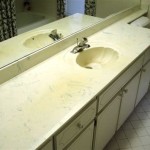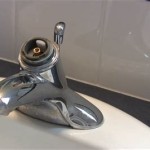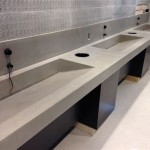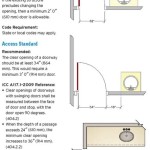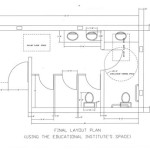How to Put a Bathroom Door Handle Back On
Replacing a bathroom door handle can be a simple DIY project that can save you money and time. However, if you've never done it before, you may find yourself staring at a pile of screws and a loose handle, wondering where to begin. This article will guide you through the process of reinstalling a bathroom door handle, explaining each step in detail, so you can tackle this project with confidence.
Understanding the Components
Before you start, it's essential to understand the basic components of a bathroom door handle. Most standard handles consist of the following:
- Handle: The part you grab to open and close the door. This may have a latch or locking mechanism within the handle.
- Latch: The mechanism that secures the door when closed. This is usually attached to the handle.
- Strike Plate: A metal plate that holds the latch mechanism in place. It's mounted on the door frame.
- Screws: Secure the handle, latch, and strike plate to the door and frame.
Step-by-Step Guide to Reattaching the Bathroom Door Handle
Now that you have a basic understanding of the components, let's walk through the process of reinstalling the handle. Here's a step-by-step guide:
1. Gather Necessary Tools
Before you start, make sure you have the following tools handy:
- Screwdriver: A Phillips head screwdriver will be needed for most door handles.
- Pencil or Pen: You may need this to mark the screw holes for the strike plate.
- Level: To ensure the strike plate is installed straight.
Note: If you are replacing the entire handle set, ensure you have the new components ready, including the handle, latch, strike plate, and screws.
2. Remove the Old Handle
If you are replacing the handle, you will need to remove the old one first. To do this, use your screwdriver to remove the screws holding the handle to the door. If there are screws on the strike plate, remove them as well. Once all the screws are out, gently pull the handle and latch off the door.
3. Prepare the Door and Frame
Check the door and frame for any dirt, paint, or debris that could interfere with the installation of the new handle. Clean the area thoroughly to ensure a smooth installation. It's important to make sure holes on the door and frame are free of debris before inserting screws.
4. Attach the Latch
Place the latch onto the door, aligning it with the holes provided on the latch. The latch should have a small metal piece that extends out from the body. This is called the "deadbolt," and it should be positioned so it aligns with the strike plate on the door frame. Secure the latch with screws. This step is crucial for ensuring the door closes properly and the latch engages correctly.
5. Attach the Handle to the Latch
Use the provided screws to attach the handle to the latch. Ensure you have the appropriate screws for the specific handle and latch. If you are unsure, consult the manufacturer's instructions. The handle should be securely attached to the latch and the door, allowing for smooth operation.
6. Install the Strike Plate
The strike plate is the metal piece that is mounted on the door frame. It catches the latch when the door is closed. If you are replacing the strike plate, you will need to mark the location for the new strike plate using the pencil or pen. Use the level to ensure the strike plate is straight. Then, use the provided screws to attach the strike plate to the door frame. The strike plate should be positioned so that the latch engages correctly when the door is closed.
7. Test the Handle
After attaching the handle and strike plate, test the handle by opening and closing the door. Ensure that the latch engages and disengages smoothly, and the handle operates without any obstruction. If you encounter issues, check your installation and ensure all the screws are securely fastened.
Additional Tips
Here are some additional tips to make the process easier:
- Read the instructions: Always refer to the manufacturer's instructions for your specific door handle model. They often contain valuable information and specific guidance for your model.
- Use the right screwdriver: Make sure you are using the correct size and type of screwdriver for the screws. Using the wrong screwdriver can strip the screws or damage the handle.
- Avoid overtightening: Overtightening the screws can damage the door or frame. Tighten the screws securely but not forcefully.
- Clean up: Once you have finished installing the handle, clean up any debris or leftover screws.
By following these steps, you can successfully put a bathroom door handle back on, saving yourself time and money. Remember, if you are unsure about any part of the process or lack the necessary tools, consulting a professional is always a safe and reliable option.

How To Install A Door Knob

Diy Project Installing A Bathroom Lock

Bathroom Door Knob Replacement

8 Ways To Unlock A Door Knob With Hole In The Side

How To Fix A Loose Door Handle Replace Broken Spring

How To Remove Door Handle With A Bathroom Lock Hiatt Hardware

More Handles Technical Guides My Door Handle Grub S Keep Falling Out How To Resolve This Our Blog

How To Install A Door Knob

Repairing Loose Door Handles On Hollow Doors

Parts Of Internal Door Handles Explained Specification Advice
Related Posts
